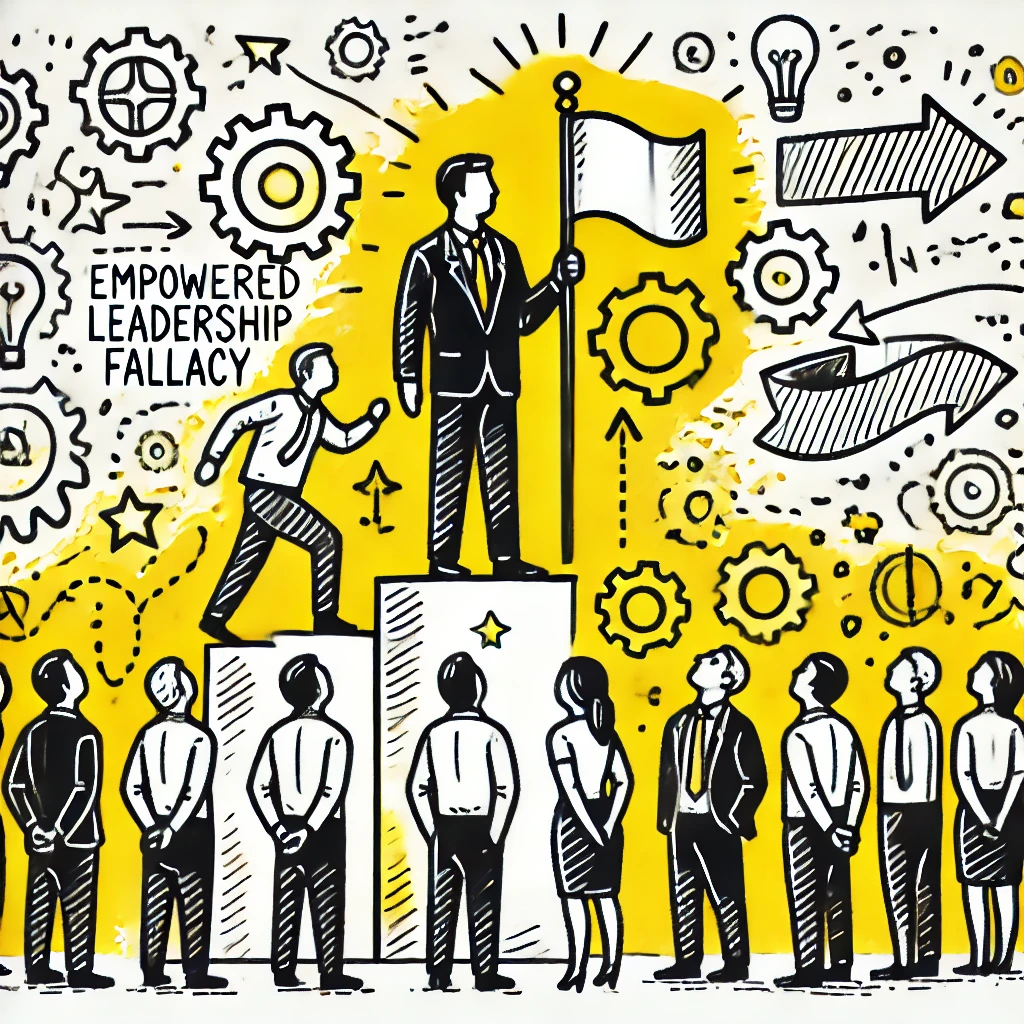
Understanding the realities of team dynamics is critical for effective leadership
In an ideal world, CEOs and founders view their teams as independent natural innovators — taking the initiative, solving problems proactively, and driving progress toward a shared vision and company goals.
The Empowered Leadership Fallacy is precisely this misconception that simply granting teams autonomy without providing adequate guidance, context, or support will naturally lead to innovation and success. This lack of strategic alignment often results in misdirection and reduced performance.
From our experience, leaders who stay closely involved in their team’s work—offering both support and fostering challenges— tend to promote more significant growth and alignment, resulting in more successful outcomes for the organisation.
However, this leadership approach can be particularly challenging when difficulties arise, or pressure builds up in a company. It can backfire if leaders become too closely involved, especially in situations like slow development cycles or other complex challenges. This presents several dilemmas to CEOs and founders that, when not correctly addressed, can negatively impact your organisation, block team potential and hinder innovation.
In our next two articles we will dive deeper into some of these dilemmas and how we should tackle them.
- Urgency overload dilemma
- Pressure dilemma
- Knowledge gap dilema
Urgency overload
Anyone who has worked in a tech company, especially in fast-growing startups, is all too familiar with the relentless waves of urgent tasks—regressions, bugs, client complaints, and immediate feature requests that seemingly can’t wait until tomorrow. This is the classic scenario, “when everything is urgent, nothing is truly urgent”.
In these situations, we usually see teams overwhelmed by constant firefighting, shifting from acting strategically to reacting by impulse, mainly because they don’t know what is critical. This leads to a cycle where we continuously address symptoms rather than root causes: to fix “today’s problems,” teams often only scratch the surface, focusing on quick fixes instead of digging deeper to identify and resolve the underlying issues.
The compound effect of this approach creates a cycle of recurring problems and accumulating technical debt - the Urgency Overload Dilemma - which not only delays long-term plans but also limits the capacity of your team to innovate. Left unchecked, it can even threaten your team and your company.
This is where you as a leader must step in with a cool head, ruthlessly prioritising tasks and giving your teams a clear direction and which goals are strategic for the company.
Effective leaders provide the context teams need to move from reactive chaos to sustainable progress. However, this does not mean micromanaging. Instead, it’s about leading with a “high alignment, loosely coupled” approach—ensuring teams understand the broader vision while giving them the autonomy to create their plans, with leaders offering guidance and advice.
An essential aspect of this approach involves shielding development teams from constant requests and interruptions. Leaders must act as a buffer, filtering and prioritizing demands from various stakeholders, including other C-level executives. At the same time, they need to ensure that the development plan will address the critical issues that concern different stakeholders. This delicate balance allows development teams to focus on their work while aligning with the company’s strategic goals and addressing pressing concerns.
Pressure from Leadership
CEOs and founders possess unique insights and feedback that can help their teams progress towards their goals. However, as you start hiring and your organisation grows, it becomes difficult to fully understand the complexities and nuances of your teams’ challenges. When problems arise or pressure builds up, well-intentioned CEO or founder interventions may worsen matters. This leads to what we call the Pressure Dilemma—where the pressure to deliver results pushes CEOs to become more involved, whether by joining daily stand-ups or urging developers to focus on specific tasks.
Ironically, this behaviour can undermine the empowerment these leaders aim to cultivate. Rather than feeling autonomous and proactive, team members may feel rushed, micromanaged, and stripped of their decision-making power. This can erode motivation and creativity, ultimately stifling the innovation and ownership that teams need to succeed.
You cannot forget that your role is to communicate priorities and the high-level strategy to follow. You can advise your teams, but ultimately, they need to have the autonomy to create their own plans and growth.
In the next article, we will explore the third dilemma - Knowledge Gap - and we will share insights of how you can address these dilemmas.
The Non-Technical Founders survival guide
How to spot, avoid & recover from 7 start-up scuppering traps.
The Non-Technical Founders survival guide: How to spot, avoid & recover from 7 start-up scuppering traps.
